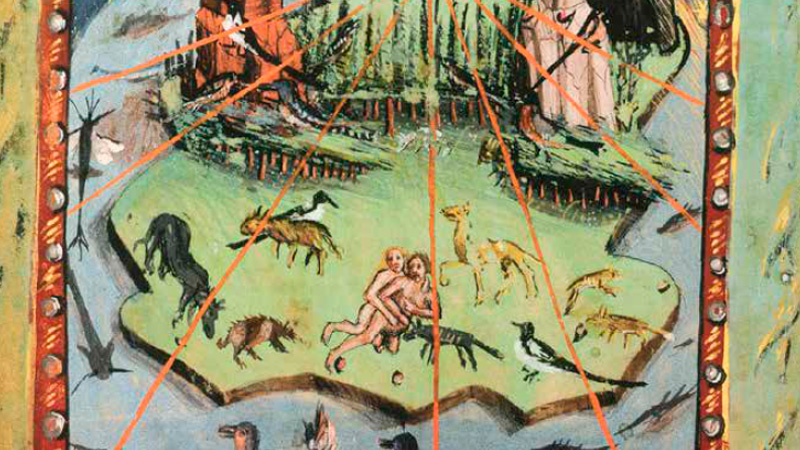John Paul II began his first encyclical with the words “Jesus Christ, the Redeemer of Man, is the Center and Purpose of Human History”. In doing so he fired a shot across the bows of the then fashionable Marxism, for whom the history of the world was determined by the dynamics of class conflict. As the Saarland philosopher Peter Wust wrote in his 1931 work Crisis in the West, Christian self-knowledge meant the discovery for the first time of the complete extent of man’s metaphysical structure, and of the entire actual and potential range of his history1. The International Theological Commission under the chairmanship of Cardinal Ratzinger expressed the position thus:
In the last time inaugurated at Pentecost, the risen Christ, Alpha and Omega, enters into the history of peoples: from that moment, the sense of history and thus of culture is unsealed and the Holy Spirit reveals it by actualizing and communicating it to all. The Church is the sacrament of this revelation and its communication. It recenters every culture into which Christ is received, placing it in the axis of the world which is coming, and restores the union broken by the Prince of the world. Culture in thus eschatologically situated; it tends towards it completion in Christ, but it cannot be saved except by associating itself with repudiation of evil.
Using the language of Trinitarian appropriations, the English Dominican, Aidan Nichols has addressed the subject of what it mean for a culture to be centered on Christ:
First, a culture should be conscious of transcendence as its true origin and goal, and this we call culture’s tacit “paterological” dimensions, its implicit reference to the Father. Second, the forms which a culture employs should manifest integrity – wholeness and interconnectedness; clarity – transparency to meaning; and harmony – a due proportion in the ways that its constituent elements related to the culture as a whole. And since these qualities – integrity, clarity, and harmony – are appropriated in classical theology to the divine Son, the “Art” of God and splendor of the Father, we can call such qualities of the beautiful form the specifically Christological aspect of culture… and thirdly, then, in the Trinitarian taxis, the spiritually vital and health-giving character of the moral ethos of our culture yield up culture’s pneumatological dimension, its relation to the Holy Spirit.2
In the celebration of the 30th anniversary of Pope John Paul II’s Christological encyclical, I will narrow my analysis to the contemporary problems associated with what Nichols calls the Christological dimension. In particular I would like to address the question of why the Christological dimension is so weak within countries of the western world.
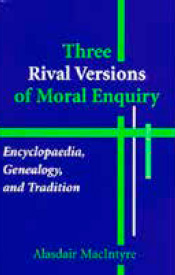 «A starting place for this analysis is Alasdair MacIntyre’s judgment that the institutions of contemporary Western culture are a site of civil war between the proponents of tree rival versions of morality, justice and truth. These are broadly categorized as the classical-theistic synthesis, the eighteenth century Enlightenment philosophies and the 19th century Romantic reactions to the Enlightenment in its Nietzschean form»A starting place for this analysis is Alasdair MacIntyre’s judgment that the institutions of contemporary Western culture are a site of civil war between the proponents of three rival versions of morality, justice, and truth. These are broadly categorized as the classical-theistic synthesis, the eighteenth century Enlightenment philosophies, and the 19th century Romantic reactions to the Enlightenment in its Nietzschean form. MacIntyre believes that each of these three dominant traditions come with their own lists of virtues and vices, their own notions of rationality and justice and their own approach to the relationship between faith and reason. In any given institution it is possible to find proponents of all three traditions, though in some institutions like courts and parliaments, one can find a dominance of Enlightenment types, while in institutions such as universities and the more artistically oriented professions, there is a dominance of the Romantic, Nietzschean types.
«A starting place for this analysis is Alasdair MacIntyre’s judgment that the institutions of contemporary Western culture are a site of civil war between the proponents of tree rival versions of morality, justice and truth. These are broadly categorized as the classical-theistic synthesis, the eighteenth century Enlightenment philosophies and the 19th century Romantic reactions to the Enlightenment in its Nietzschean form»A starting place for this analysis is Alasdair MacIntyre’s judgment that the institutions of contemporary Western culture are a site of civil war between the proponents of three rival versions of morality, justice, and truth. These are broadly categorized as the classical-theistic synthesis, the eighteenth century Enlightenment philosophies, and the 19th century Romantic reactions to the Enlightenment in its Nietzschean form. MacIntyre believes that each of these three dominant traditions come with their own lists of virtues and vices, their own notions of rationality and justice and their own approach to the relationship between faith and reason. In any given institution it is possible to find proponents of all three traditions, though in some institutions like courts and parliaments, one can find a dominance of Enlightenment types, while in institutions such as universities and the more artistically oriented professions, there is a dominance of the Romantic, Nietzschean types.
MacIntyre observes that in cultures characterized by conflicts of values between and within institutions individuals are encouraged to fragment the self and wear different masks in different contexts in order to avoid social marginalization. The Czech intellectual Vaclav Havel has described this behavior as being like people on a football field who are playing for a number of different teams at once, each with a different uniform and not knowing to which team they ultimately belong. MacIntyre argues that the behavior of the Sartrean rebel, a popular sociological species in intellectual and artistic circles of the 1960s, was an attempt by the self to defend its integrity from the bureaucratic practices which divided it into its rôle-governed functions; while the contemporary post-modern celebration of difference is also, at least in part, a reaction against what Weber identified as the iron cage of instrumental reason. Far from being “value neutral” MacIntyre believes that bureaucratic practices are ideological, that is, specifically designed to serve a political end, in this case that of concealing the conflict between the three dominants traditions. Since liberalism operates so as to preclude appeals to what might be described loosely as “ultimate values” there is a social trend toward undermining the prudential judgment of professionals and circumscribing their actions with allegedly value neutral mandatory regulations. As a consequence, John Milbank has noted that professionals are “no longer trusted, but instead must be endlessly spied upon, and measured against a spatial checklist of routinized procedure, that is alien to all genuine inculcation of excellence.”3
Milbank also argues that in contemporary Western society, the sovereignty of Christ has been replaced by the sovereignty of the mob. In his presentation of this thesis he applies Giorgio Agamben’s account of the homo sacer in Roman jurisprudence to an analysis of the trial of Christ. After the succession of the plebs in Rome it was granted to them the right to pursue to the death someone whom they as a collective had condemned. Such an individual was declared homo sacer – a person cast out from the community. For Milbank, Christ was homo sacer some three times over. He is abandoned first by the Jewish leaders to the Roman governor, then by those representing the sovereignty of Rome to the sovereign-executive mob, then finally by the sovereignexecutive mob to the Roman soldiers. Milbank concludes that neither Jewish nor Roman law could be relied upon to condemn Christ, only a mob into which sovereign power and plebiscitory delegation had been collapsed could achieve this 4.
The “sovereignty of the mob” and its juxtaposition with the sovereignty of Christ is a recurring theme in Milbank’s analysis of contemporary Western culture. Following Jean-Yves Lacoste and Olivier Boulnois, Milbank argues that the sovereignty of Christ was lost with the rise of modern philosophy which did not simply emancipate itself from theology but arose from within the space of “pure nature” – something he regards as “a fiction” created by theologians in the Baroque era. Whereas in the pre-modern reading, the Incarnation of Christ and the hypostatic descent of the Holy Spirit inaugurated on earth a counter-polity exercising a counter-sovereignty, nourished by sovereign victimhood, in the theology of the Baroque era, particularly in the work of Suarez (1545- 1617), a dualism developed between nature and grace and the natural and the supernatural, with the natural eventually finding itself equated with the secular and the supernatural finding itself equated with the sacred.
The Suarezian political theory was highly popular in midtwentieth century Catholic social thought, but its claims to a classically Thomist pedigree have been severely questioned, and it is now generally agreed that the notion of there being “two ends” to human nature, one natural, and one supernatural, and corresponding secular and sacred orders, is alien to classical Thomism. As the Thomist scholar, Fr. I. Th. Eschmann noted, “however independent Church and State are, [in the thought of St Thomas] they do not escape being parts of one res publica hominum sub Deo, principe universitatis.”5 Catholic scholars calling themselves “Whig Thomists”, an expression coined by Michael Novak, continue to foster the Suarezian dualism, and this fault line between those who follow Suarez and those who prefer a more pre-modern interpretation is pivotal for theological engagements with the phenomena of modern and post-modern culture. A new generation of Catholic political philosophers and theologians is emerging who prefer the Augustinian concept of the two cities, to the Suarezian concept of the two ends. As Williams T Cavanaugh has expressed the idea:
Augustine does not map the two cities out in space, but rather projects them across time. The reason that Augustine is compelled to speak of two cities is not because there are some human pursuits that are properly terrestrial, and others that pertain to God, but simply because God saves in time. Salvation has a history, where climax is in the advent of Jesus Christ, but whose definitive closure remains in the future. Christ has triumphed over the principalities and powers but there remains resistance to Christ’s saving action. The two cities are not sacred and profane spheres of life. The two cities are the already and the not yet of the Kingdom of God 6.
 «The Suarezian political theory was highly popular in mid-twentieth century Catholic social thought, but its claims to a classically Thomist pedigree have been severely questioned, and it is now generally agreed that the notion of there being “two ends” to human nature, one natural, and one supernatural, and corresponding secular and sacred orders, is alien to classical Thomism».According to Cavanaugh’s reading of intellectual and social history, the modern state arose not by secularizing politics but by supplanting the imagination of the body of Christ with an heretical theology of salvation through the state7. While modernity represents salvation through the state, post-modernity is coming to represent salvation through globalization.
«The Suarezian political theory was highly popular in mid-twentieth century Catholic social thought, but its claims to a classically Thomist pedigree have been severely questioned, and it is now generally agreed that the notion of there being “two ends” to human nature, one natural, and one supernatural, and corresponding secular and sacred orders, is alien to classical Thomism».According to Cavanaugh’s reading of intellectual and social history, the modern state arose not by secularizing politics but by supplanting the imagination of the body of Christ with an heretical theology of salvation through the state7. While modernity represents salvation through the state, post-modernity is coming to represent salvation through globalization.
When the sovereignty of Christ is replaced by the sovereignty of the mob, the consumption of the Body and Blood of Christ is replaced by the consumption of brands which serve as symbols of some desired personal or social attribute. According to Naomi Klein, the author of the 2002 best seller No Logo, brand-name multinational corporations sell images and lifestyle rather than simple commodities: “Branding is about ideas, attitudes, lifestyle, and values all embodied in the logo. The ‘transcendental logo’ replaces the corporeal world of commodities, of ‘earthbound products.’” 8 For example, a pair of Dolce & Gabbana underpants will cost several times the money of the same garment without the embroidered D & G logo. The consumer does not buy the expensive designer label product because of superior quality fabric or tailoring, but because he believes that the logo will pseudo-sacramentally convey a desired social attribute such as the physical prowess of David Beckham who was paid millions of British pounds to be photographed wearing the product. The market power of brands and logo attest to a sublimated need in post-modernity for the sacramental that is, for signs and symbols which give definition to the individual self. De Maeseneer, in a fascinating essay comparing the reception of the stigmata by St. Francis of Assisi, with the mechanisms by which brand logos are engraved on the human memory, develops the thesis that brand-name multinational corporation have their own theo-programme9. Places like Eurodisney and the various Disney emporia are not only in the words of one of my French friends, “a cultural Chernobyl” but it is argued that they are a secular culture’s analogue for sacred spaces which hold out the promise of an escape from the mundane.
Williams Cavanaugh believes that “the kenosis of God creates the possibility of a human subject very different from the consumer self. However he reaches the conclusion that the Trinitarian solution to the homeless ego in search of a symbol by which to define itself, is currently eclipsed by the market. The logos of designer brands have replaced the Eucharist as the source of the unity or disunity of the self”10. For Cavanaugh and Milbank, the current global neo-liberalism represents a rival sacrality to that of Christ: “Economic relations do not operate on value-neutral laws, but are rather carriers of specific convictions about the nature of the human person, its origins and its destiny. There is an implicit anthropology and an implicit theology in every economics,”11.
In contrast to the ideology of global neo-liberalism, Cavanaugh believes that a Eucharistic theology “produces a catholicity which does not simply prescind from the local, but contains the universal Catholic within each local embodiment of the Body of Christ”12. As a consequence, “the consumer of the Eucharist is no longer the schizophrenic subject of global capitalism, awash in a sea of unrelated presents, but walks into a story with a past, present, and future.”13. Christianity rather than the ideology of neo-liberalism is the tradition in which the division between plain folk and aristocrat, universal and particular, parish and global community, can ultimately be reconciled. Within this tradition there is a most sacred place, but it exists beyond time in the eternity of the New Jerusalem; while in the period between the first Easter and the consummation of the world, the Eucharist unites the universal and the particular in a multitude of sacred places across the globe. This Eucharist theology and its linking of love and social life is powerfully expressed by Benedict XVI in his Apostolic Exhortation Sacramentum Caritatis:
Man is created for that true and eternal happiness which only God’s love can give. But our wounded freedom would go astray were it not already able to experience something of that future fulfillment. Moreover, to move forward in the right direction, we all need to be guided towards our final goal. That goal is Christ himself, the Lord who conquered sin and death, and who makes himself present to us is a special way in the Eucharistic celebration. Even though we remain “aliens and exiles” in this world (1 Pet 2:11), through faith we already share in the fullness of risen life. The Eucharist banquet, by disclosing its powerful eschatological dimension, comes to the aid of our freedom as we continue our journey 14.
In this Exhortation Pope Benedict goes on to link the sacrament of charity, as he calls the Eucharist, with the love of man and woman united in marriage. The marriage bond is intrinsically linked to the Eucharistic unity of Christ, the Bridegroom, to His Bride, the Church. This vision of the Eucharist as both an affirmation of the freedom of the individual person, and a source of unity, has been poetically expressed by Gottfried Benn, a twentieth century German medical doctor and expressivist poet. In the poem Verlorenes Ich (The Lost Ego), he wrote:
 «According to Cavanaugh’s reading of the intellectual and social history, the modern state arose not by secularizing politics but by supplanting the imagination of the body of Christ with an heretical theology of salvation through the state. While modernity represents salvation through the state, post-modernity is coming to represent salvation through globalization.»
«According to Cavanaugh’s reading of the intellectual and social history, the modern state arose not by secularizing politics but by supplanting the imagination of the body of Christ with an heretical theology of salvation through the state. While modernity represents salvation through the state, post-modernity is coming to represent salvation through globalization.»
Oh, when they all bowed towards one center and even the thinkers only thought the god, when they branched out to the shepherds and the lamb, each time the blood from the chalice had made them clean and all flowed from the one wound, all broke the bread that each man ate – oh, distant compelling fulfilled hour, which once enfolded even the lost ego 15.
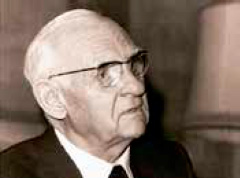 «Prescriptively, Balthasar notes that “the task of making the historical existence of Christ the norm of every individual existence is the work of the Holy Spirit and that everything in the sacramental order has to be embedded in the personal level, as mediation and encounter, as a gesture expressing personal intention, and hence it always communicates personal, historical graces, and creates personal, historical situations”».
«Prescriptively, Balthasar notes that “the task of making the historical existence of Christ the norm of every individual existence is the work of the Holy Spirit and that everything in the sacramental order has to be embedded in the personal level, as mediation and encounter, as a gesture expressing personal intention, and hence it always communicates personal, historical graces, and creates personal, historical situations”».
If the above represents a pathology report on where the Christological dimension is weak it does not entirely answer the question of why. While one can say that secularism is an alternative religion and that the sovereignty of the mob has replaced the sovereignty of Christ, and that the lost ego is wandering around the marketplaces of the world in search of a spiritual home, fascinated by the signs and symbols of companies by which a self-identity might be constructed, these explanations still do not explain why the Church has been so pastorally ineffective for such social conditions to exist.
Here it may be argued that the problem is fundamentally liturgical. In his account of the rise of secularism, von Balthasar begins with the period of the Renaissance in which there is a transformation from cultural achievement being a result of a life steeped in the liturgical consecration of religion, to a situation where cultural achievement as an end in itself takes priority. He suggest that this transition in the Renaissance mirrors a similar transition in the classical era from Aeschylus, for whom art was still a part of liturgical life, to Euripides for whom it had already become an end in itself. Prescriptively, Balthasar notes that the “task of making the historical existence of Christ the norm of every individual existence is the work of the Holy Spirit and that everything in the sacramental order has to be embedded in the personal level, as mediation and encounter, as a gesture expressing personal intention, and hence it always communicates personal, historical graces, and creates personal, historical situations.” 16.
The question is thus one of addressing how the sacramental is embedded in the personal. Here the work of Jean Borella is helpful. Borella argues that the sense of the supernatural is a sense of a higher nature or a sense that the possibilities of existence do not limit themselves to what we ordinary experience. In order for this sense to be awakened in people, they need to have an experience of forms which by themselves refer to nothing of the mundane. While elements of the physical world are always involved –otherwise no experiences of it would be possible– they are set aside from the natural order to which they originally belonged and consecrated in order to render present realities of another order.17 As Louis Duprè emphasizes, the purpose of a ritual act is not to repeat the ordinary action which it symbolizes, but to bestow meaning upon it in a higher perspective. A reduction of ritual gestures to common activity would defeat the entire purpose of ritualization, which is to transform life, not to imitate it. 18
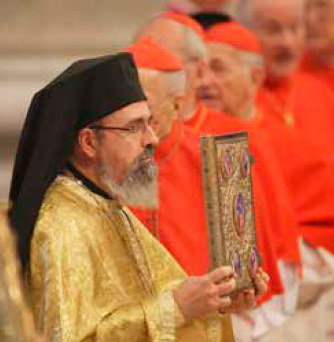 «Until these problems are resolved the Christological dimensions of Western culture will continue to be weak because the sacramental order will not be sufficiently embedded in the personal. Not only will our youth not love the Eucharist but their intellects will not be very receptive to the work of the Holy Spirit because their memories will not include within them something like a Transfiguration moment».
«Until these problems are resolved the Christological dimensions of Western culture will continue to be weak because the sacramental order will not be sufficiently embedded in the personal. Not only will our youth not love the Eucharist but their intellects will not be very receptive to the work of the Holy Spirit because their memories will not include within them something like a Transfiguration moment».
While it is difficult to generalize across the entire Western world, certainly in the English speaking parts of it, the liturgical practices have been quite problematic since at least the 1970s. What Pope Benedict calls pastoral pragmatism or bringing God down to the level of the people, parish tea party liturgy and sacro-pop music has been a dominant part of any Catholic child’s experience of liturgy over the past 40 years.
Until these problems are resolved the Christological dimensions of Western culture will continue to be weak because the sacramental order will not be sufficiently embedded in the personal. Not only will our youth not love the Eucharist but their intellects will not be very receptive to the work of the Holy Spirit because their memories will not include within them something like a Transfiguration moment. Their liturgical and sacramental experience will not have sufficiently liberated them from the mundane. Their choices will appear to be between following the mob and searching for a self-identity among the signs and symbols of the market, or pursuing the option of the Sartrean or Nietzschean rebel, which, while representing a kind of liberation from the mob, requires a foundational stance against love, that is, against the kind of human commitments that appear to place limit on the exercise of human freedom.
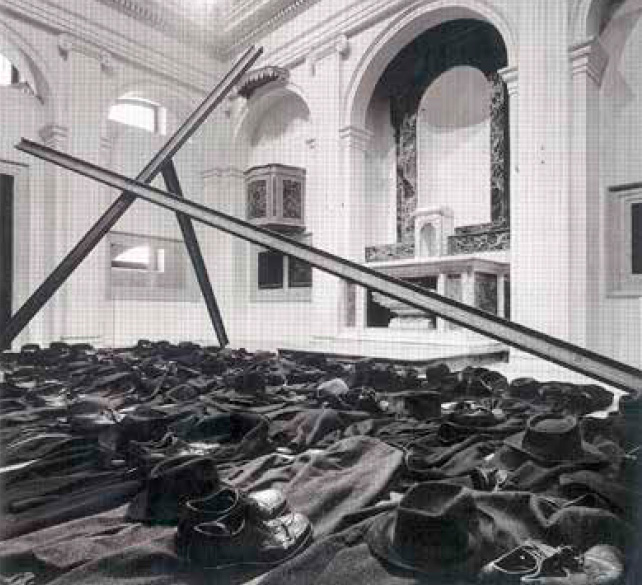 «When the sovereignty of Christ is replaced by the sovereignty of the mob, the consumption of the Body and Blood of Christ is replaced by the consumption of brands which serve as symbols of some desired personal or social attribute».
«When the sovereignty of Christ is replaced by the sovereignty of the mob, the consumption of the Body and Blood of Christ is replaced by the consumption of brands which serve as symbols of some desired personal or social attribute».
The first option, following the mob, represents a variety of inauthenticity which the young Karol Wojtyla called servile conformism, while the second option represents a kind of inauthenticity described by Wojtyla as non-involvement – a Stoic withdrawal from community and public life on the grounds that it is all too banal or requires too much self-giving. The notion that one only finds oneself though acts of love (the Gaudium et Spes 24 theme) is precisely what the Nietzschean rejects. For the Nietzschean, Gaudium et Spes 24 is the moral outlook of the slave. The servile conformism to the object of desire of the mob is not a deliberate rejection of true love, it is just a case of not knowing where real love can be found. However the option of noninvolvement, of a Stoic withdrawal into the personal dreams or projects of the emotionally unattached self, does represents a conscious foreclosure against love.
Thus, the solutions of the problems of the weakness of the Christological dimension seem to lie in the fields of sacramentality, especially the sacrament of the Eucharist, and in liturgy, which again is intimately related to the Eucharist. They also lie in taking a critical stance towards the trend to undermine the prudential judgment of professionals by circumscribing the exercises of their judgment with bureaucratic regulation, designed to prevent them from promoting their moral values. In the West, no less than in the formerly Communist countries, people need to learn to live in truth and resist having their integrity undermined by ideological regulations. Moreover the Church herself needs to resist being entangled by such regulations and the tendency to mimic modern corporate practices.
The beatified John Henry Newman wrote that the Church is not a mere creed or philosophy but a counter kingdom before which all must bow down and lick the dust of her feet so that the world may become a fit object of love.19 The sovereignty of Christ is exercised through His Church and his personal contact with his subject is effected through her ministry of the sacraments, themselves embedded within liturgical rites. One can thus take the theological anthropology of Redemptor hominis and the liturgical theology of Sacramentum Caritatis and see the second as providing the cultural healing that needs to be undertaken for the first to be restored as the infrastructural principle of western civilization, and indeed the whole world. As the English philosopher Roger Scruton has concluded:
The high culture of Europe acquired the universality of the Church which had engendered it. At the same time the core experience of membership survived, to be constantly represented in the Mass – the “communion” which is also an enactment of community. It is in this experience that our common culture renewed itself, and the arts of our culture bears witness to it, either by honoring or by defiling the thought of God’s incarnation. 20

